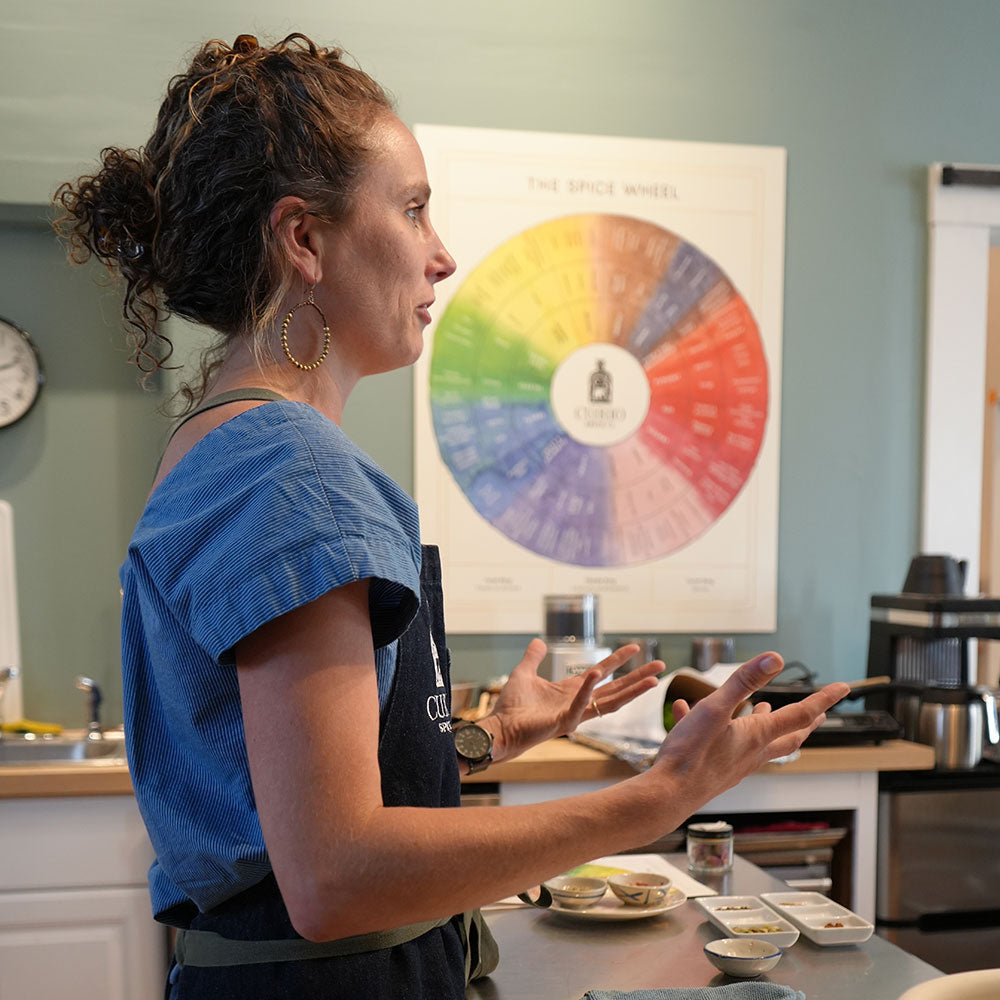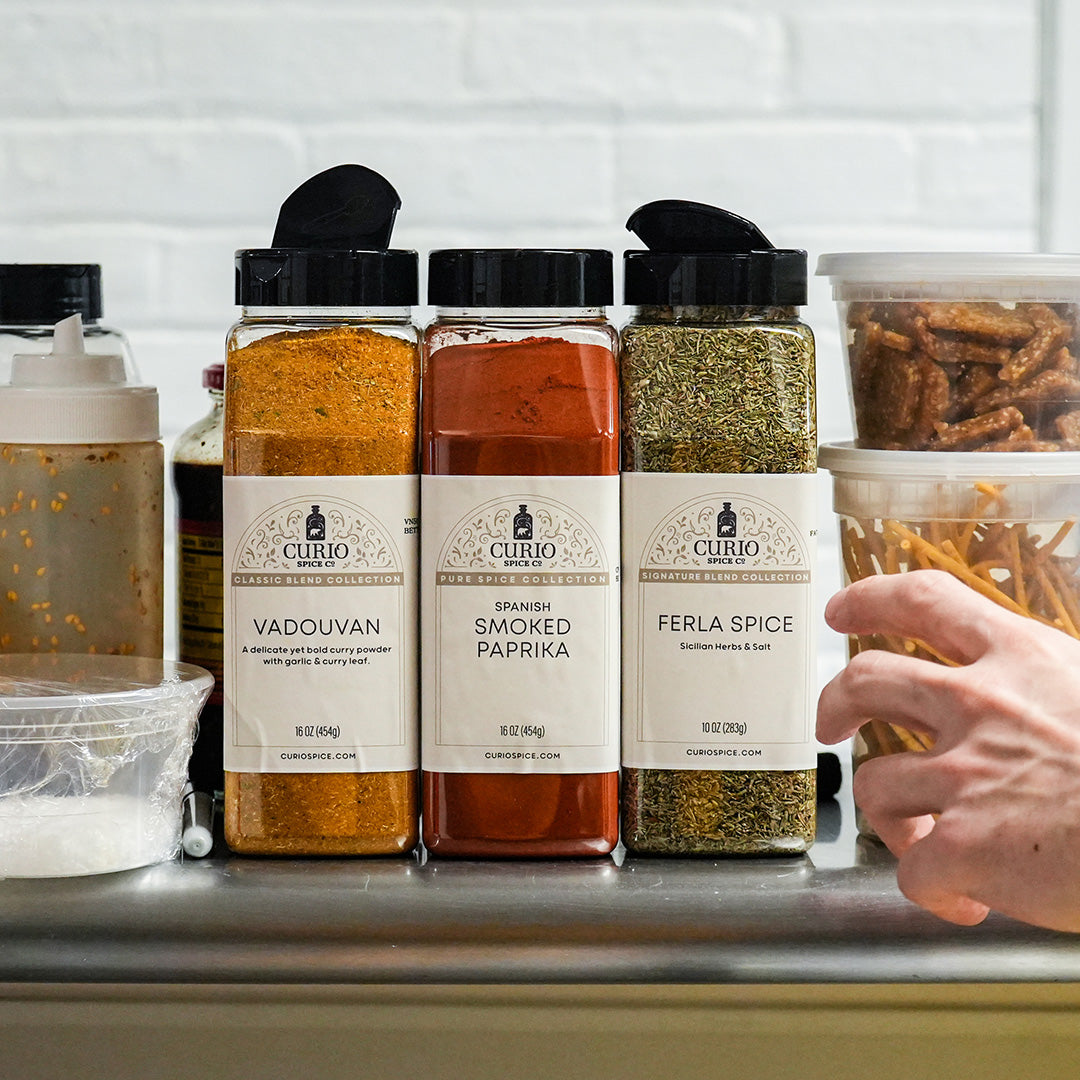Vanilla-Cranberry Stuffed Pork Tenderloin
Serves 4-6.
Stuffed pork tenderloin is a great ‘company dish’ and making it isn’t too difficult. Our version uses vanilla seeds in the filling and the pod in the pan sauce (to infuse it with flavor). Vanilla’s warmth and richness balance the stuffing’s tartness and complement the pork.
Notes: Use a very sharp knife to butterfly the tenderloin or have your butcher do it. Unroll the butterflied loin and lay plastic wrap over. Pound it lightly with a mallet or rolling pin to flatten it evenly. If you’re feeling uncertain about butterflying pork loin, YouTube has loads of how-to videos. A food processor makes quick work of the filling, but a sharp knife works too.
For the pork:
1 pound boneless pork tenderloin, butterflied and pounded to 1/2-inch thick
1 teaspoon sea salt, divided
½ cup walnuts
½ cup fresh or frozen cranberries (not thawed)
1 vanilla bean, split in half lengthwise
1 medium shallot, finely chopped
1 cup peeled, diced apple (from a medium apple)
1 tablespoon brown sugar
1 teaspoon chopped fresh rosemary
1 tablespoon neutral oil
For the pan sauce:
¼ cup white wine or apple cider
¾ cup chicken or vegetable broth
2 tablespoons butter, cut into cubes
2 teaspoons apple cider vinegar
½ teaspoon orange zest
¼ teaspoon coarsely ground black pepper
Preheat the oven to 400° F.
Season the pork Sprinkle both sides of the butterflied, pounded pork tenderloin with ½ teaspoon of the salt and set aside.
Make the filling Put the walnuts into a food processor fitted with the metal chopping blade; pulse 5-7 times to roughly chop, and transfer the nuts to a mixing bowl. Process the cranberries by pulsing 5-7 times to finely chop, then add them to the bowl of walnuts. Use the back of a paring knife to scrape the seeds out of the vanilla bean and add them to the bowl (reserve the husk to use in the sauce). Add the shallot, diced apple, brown sugar, chopped rosemary, and remaining ½ teaspoon sea salt to the bowl and mix until well-combined.
Stuff the pork Sprinkle the filling over the butterflied tenderloin, leaving a 1/2-inch clear border around the edges. Working with the long edge, roll the pork into a log and tie it securely with kitchen twine.
Cook the pork Heat the oil in a large, oven-safe skillet (cast iron is ideal) set over medium-high heat. When the oil shimmers, sear the tied pork until it’s well-browned on all sides. Transfer the skillet to the oven and roast until the pork is cooked through, 145° F internal temperature. Transfer the pork to a cutting board to rest.
Make the sauce Set the skillet back over medium heat and scoop out all but 2 tablespoons of the fat. Add the wine or cider to the skillet and use a wooden spoon or whisk to scrape up any browned bits on the bottom. Simmer until the liquid is reduced by half, about 3 minutes. Add the stock and vanilla bean husk.
Simmer until the sauce has thickened slightly, 3–5 minutes. (A spoon dragged across the bottom of the pan should leave an open ‘trail’ visible for a couple of seconds.) Turn off the heat and remove the vanilla bean husk. Add the butter cubes and whisk until they are fully incorporated into the sauce. Whisk in the vinegar, orange zest, and black pepper. Taste the sauce and add salt if needed.
Serve Cut pork into ¼-inch thick slices and serve with the sauce drizzled over top.








Leave a comment